QuestionHi my boyfriend has had a water dragon for about 2 months maybe longer, and she's hardly ate. she seems healthy but we've only seen her eat 1 locust. we're getting really worried about her. can you please help?
AnswerHi Kristy,
In most cases, its a case of improper information on the care the WD need. Pet stores (in most cases) really have no idea of the proper care for the reptiles they sell. Good uvb is one of those areas, which is one of the most important to the reptiles. There is a paragraph below on what is good uvb and what is not correct uvb.
Another area is temperatures. If they don't have correct temperatures, their foods cannot digest properly.
Lots of good info on WD is available at.... http://www.triciaswaterdragon.com (although a bit outdated on lighting/uvb)
Moving to a new home is extremely stressful. Its best to hang back a bit and only do what you need to do with him for a few days and see if that helps. Make sure that the area he is in isn't a real active area with other pets, and at night, no tv, radios, stereos, computers to interrupt his sleep cycle.
Also, make sure that his crickets and other insects are of a proper size for him. If you offer crickets its important to either remove the uneaten crickets but also place a cut potato in the cage. That way any escaped crickets will nibble on the potato instead of your water dragon.
Also, be sure to gut load(feed) your insects for at least 24-48 hours before offering them to your WD. using grains, cereals, dark greens and veggies work well. That gel stuff they sell is not a good source of gut loading and does not make the crickets nutritious for your WD.
My suggestions for you to do/try are:check your temperatures, especially basking area. If the temperatures are not correct, they cannot digest their foods properly and the process is slowed causing them not to be hungry. Basking temperatures should be about 85-90F degrees. Cool end and night time should be in the 75-80F degree range. (Temperatures are in Fahrenheit )
They need a high humidity level of near 80%. Mist her and her cage often. Be sure she knows where her water is. You might want to add an air stone to her water. The bubbles will attract her attention and she may drink.
On the not eating.... if, after making any changes in care, try different insects (with crickets, you can break the hind legs on them to prevent them from jumping) and try offering some dark leafy greens, fruits and vegetables. Some WD will eat the greens, etc. Lettuce has no nutrition...you can offer a variety of dark leafy greens. The best ones are collard greens, turnip greens, mustard greens, dandelion greens. You can offer finely chopped veggies and grated winter squash. You can offer small amounts of various fruits also.
Do you turn off all the white lights at night? They need to have darkness during the night. Some don't even like the red lights at night so you may have to switch to a ceramic heat emitter for night time heat.
On the UVB,
Supplying uvb can be done in a few ways. By special lights that come in fluorescent tubes or special screw in bulbs (mercury vapor)that are designed to produce uvb and heat. The tubes do not produce heat. UVB is needed by the reptiles to be able to absorb the calcium in the foods they eat. With out the uvb, they will develop metabolic bone disease. There are tubes that say ''full spectrum'' but they do not produce any uvb.With the correct tubes, they must say that they produce BOTH uvb and uva. The uvb needs to be 5% or higher. Repti Sun 10.0 and the Repti Glo 8.0's are a great source for uvb. The old "favorites" are the repti sun 5.0 or the Iguana light..which are the same tube, just different package. These need to be positioned 6-8 inches over the reptile for the 5% and 8% and 8-10 inches for the 10% so that they get the uvb that is needed. The tubes need to be replaced every 6-9 months as that they stop producing UVB long before they stop producing light.Using a fixture that is 2-3 feet in length will provide adequate uvb for your CWD. You do not want to use compact uvb lights, both the spiral/coil type and the ones that look like long "U's" laying on their side and a few other brands are causing what basically amounts to snow blindness in reptiles and some do not provide the UVB in a direction that is needed for your lizard. To read more on this, you can go to http://www.uvguide.co.uk/index.htm
The companies have been working to correct the problem with the lighting so its important to know if the light you have MAY be the old version.
This link will take you to my discussion group and to a post that tells how to tell the new compacts from the old ones. http://pets.groups.yahoo.com/group/UVB_Meter_Owners/message/6721
On the mercury vapor , they also produce heat. They also produce the uvb and uva. The best on the market now are the Mega Rays.(http://www.reptileuv.com) The distance from these are greater than the uvb tubes and the directions must be followed that are listed for the light. When using the mercury vapor lights, you don't need to have one light for uvb and one for heat. The Mercury vapor lights provide both.
For daytime heat, if using the tube uvb, regular household incandescent light bulbs produce heat. I like the halogen bulbs as they produce a nice bright light for your CWD. The wattage will
depend on the size of your reptiles enclosure. and the room temperature.Of course, the best uvb is from the sun and if you are in an area that you are able to take your CWD outside in a proper enclosure, (Never a tank or enclosed, solid cage)
If after changing things that may need changed, she still does not eat, then I would get her to a vet for a fecal test for internal parasites.

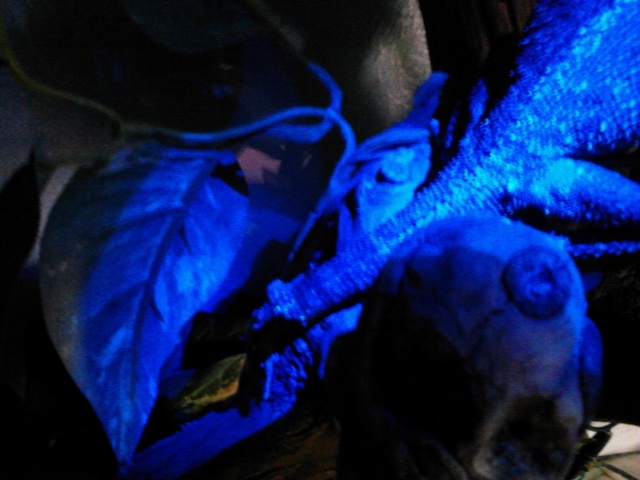 Broken Tail
Question
Broken Tail!
I have a female Mountain H
Broken Tail
Question
Broken Tail!
I have a female Mountain H
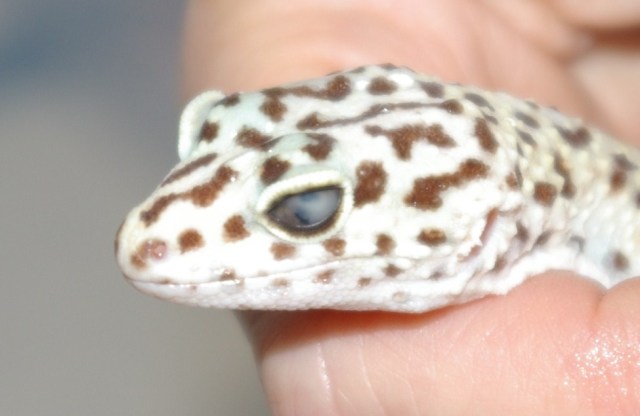 Clouded Leopard Gecko Eye
QuestionMaxs Eye
QUESTION: Hi, Tracie, Our femal
Clouded Leopard Gecko Eye
QuestionMaxs Eye
QUESTION: Hi, Tracie, Our femal
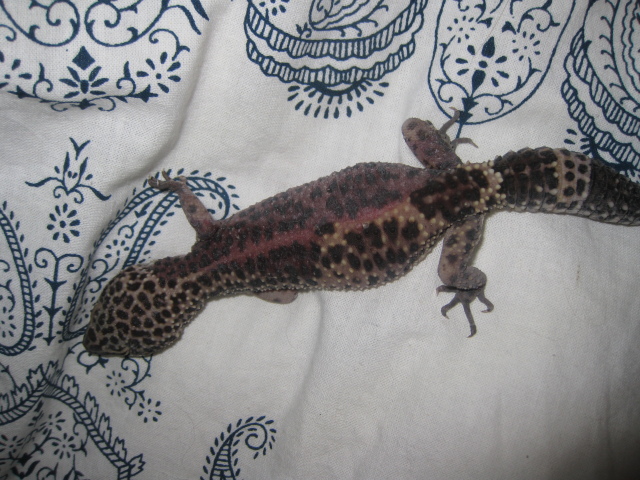 my leopard gecko is fading
QuestionSleeping stella
QUESTION: Hi, I have a v
my leopard gecko is fading
QuestionSleeping stella
QUESTION: Hi, I have a v
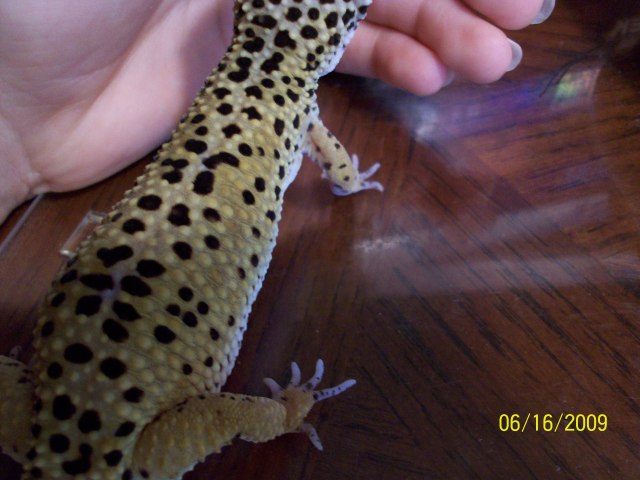 my leopard geckos health
QuestionQUESTION: Hello, I have a question about my leo
my leopard geckos health
QuestionQUESTION: Hello, I have a question about my leo
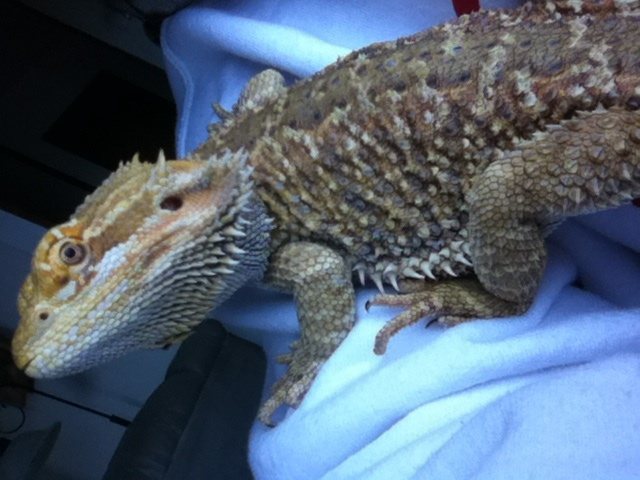 My 9 month old beardie
QuestionOscar
Oscar
QUESTION: My boyfrie
My 9 month old beardie
QuestionOscar
Oscar
QUESTION: My boyfrie